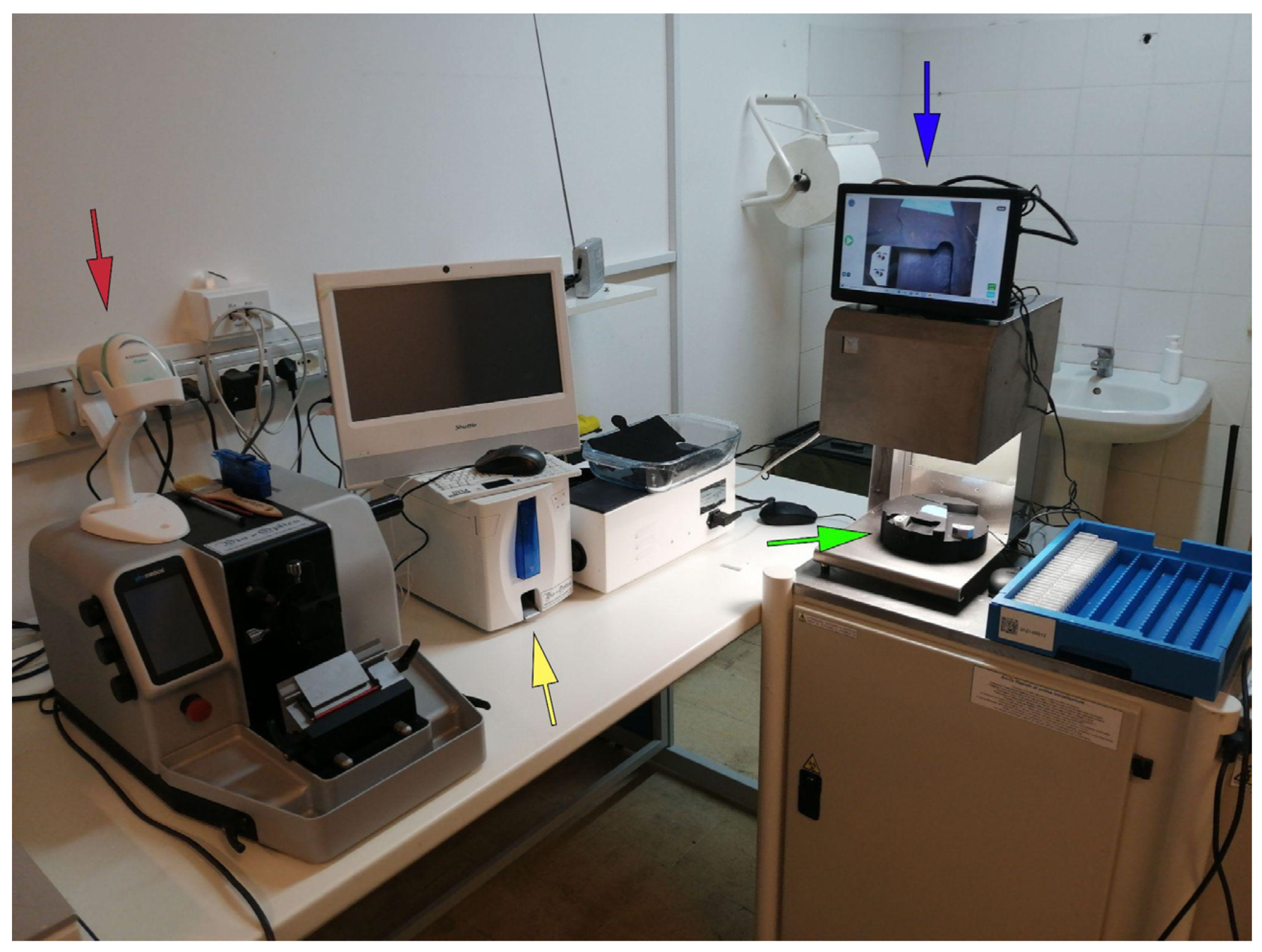Difference between revisions of "Template:Article of the week"
Shawndouglas (talk | contribs) (Updated article of the week text.) |
Shawndouglas (talk | contribs) (Updated article of the week text.) |
||
| Line 1: | Line 1: | ||
<div style="float: left; margin: 0.5em 0.9em 0.4em 0em;">[[File: | <div style="float: left; margin: 0.5em 0.9em 0.4em 0em;">[[File:Fig7 Fraggetta Diagnostics21 11-10.png|240px]]</div> | ||
'''"[[Journal: | '''"[[Journal:A survival guide for the rapid transition to a fully digital workflow: The Caltagirone example|A survival guide for the rapid transition to a fully digital workflow: The Caltagirone example]]"''' | ||
[[Digital pathology]] for the routine assessment of cases for primary diagnosis has been implemented by few [[Laboratory|laboratories]] worldwide. The Gravina Hospital in Caltagirone (Sicily, Italy), which collects cases from seven different [[hospital]]s distributed in the Catania area, converted its entire [[workflow]] to digital starting from 2019. Before the transition, the Caltagirone [[pathology]] laboratory was characterized by a non-tracked workflow, based on paper requests, and hand-written blocks and slides, as well as manual assembling and delivering of the cases and glass slides to the pathologists. Moreover, the arrangement of the spaces and offices in the department was illogical and under-productive for the linearity of the workflow. For these reasons, an adequate 2D [[barcode]] system for tracking purposes, the redistribution of laboratory spaces, and the implementation of whole-slide imaging (WSI) technology based on a [[laboratory information system]] (LIS)-centric approach ... ('''[[Journal:A survival guide for the rapid transition to a fully digital workflow: The Caltagirone example|Full article...]]''')<br /> | |||
<br /> | <br /> | ||
''Recently featured'': | ''Recently featured'': | ||
{{flowlist | | {{flowlist | | ||
* [[Journal:From biobank and data silos into a data commons: Convergence to support translational medicine|From biobank and data silos into a data commons: Convergence to support translational medicine]] | |||
* [[Journal:Quality management system implementation in human and animal laboratories|Quality management system implementation in human and animal laboratories]] | * [[Journal:Quality management system implementation in human and animal laboratories|Quality management system implementation in human and animal laboratories]] | ||
* [[Journal:Data management and modeling in plant biology|Data management and modeling in plant biology]] | * [[Journal:Data management and modeling in plant biology|Data management and modeling in plant biology]] | ||
}} | }} | ||
Revision as of 00:12, 7 September 2022
"A survival guide for the rapid transition to a fully digital workflow: The Caltagirone example"
Digital pathology for the routine assessment of cases for primary diagnosis has been implemented by few laboratories worldwide. The Gravina Hospital in Caltagirone (Sicily, Italy), which collects cases from seven different hospitals distributed in the Catania area, converted its entire workflow to digital starting from 2019. Before the transition, the Caltagirone pathology laboratory was characterized by a non-tracked workflow, based on paper requests, and hand-written blocks and slides, as well as manual assembling and delivering of the cases and glass slides to the pathologists. Moreover, the arrangement of the spaces and offices in the department was illogical and under-productive for the linearity of the workflow. For these reasons, an adequate 2D barcode system for tracking purposes, the redistribution of laboratory spaces, and the implementation of whole-slide imaging (WSI) technology based on a laboratory information system (LIS)-centric approach ... (Full article...)
Recently featured:










